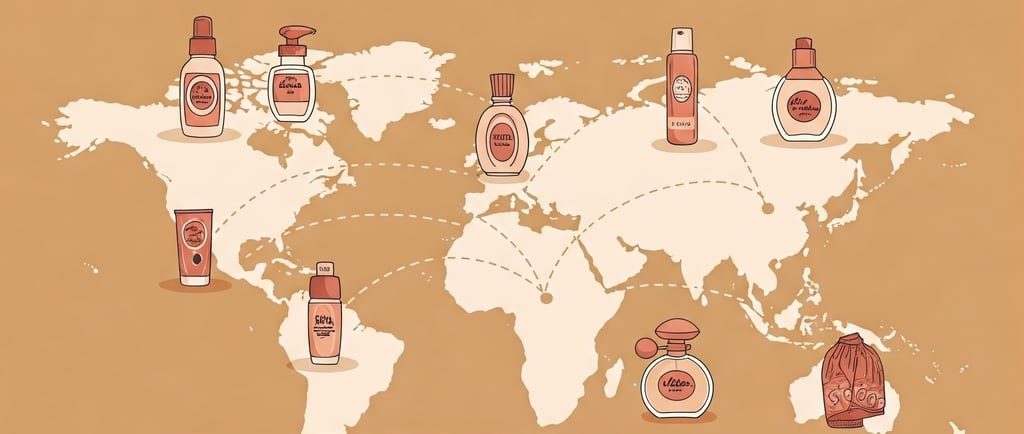What are the opportunities for international trade for beauty and fashion products?


The global beauty and fashion industries present substantial opportunities for international trade, driven by evolving consumer preferences, emerging markets, and technological advancements. Engaging in international trade allows businesses to expand their reach, diversify revenue streams, and tap into new growth markets.
Beauty Industry Trade Opportunities
Robust Market Growth: In 2022, the global beauty market—including skincare, fragrance, makeup, and haircare—generated approximately $430 billion in revenue. This growth underscores the sector's resilience and potential for expansion.
Export Potential: Countries like France lead in beauty product exports, with values reaching $12 billion in 2023. Such figures highlight the lucrative nature of beauty exports and the demand for quality products.
Regional Demand Variations: Different regions exhibit unique beauty product demands. For instance, Asia shows a growing interest in natural beauty products, while the Middle East favors custom fragrances. Understanding these regional preferences enables businesses to tailor their offerings effectively.
Fashion Industry Trade Opportunities
Significant Export Values: In 2022, global clothing exports totaled $576 billion, marking a 5% year-over-year increase. This steady growth reflects consistent demand and trading activity in the fashion sector.
Leading Exporters: China stands as the world's largest clothing exporter, with exports valued at $178.4 billion in 2022, accounting for 22.6% of the global market share. Other significant exporters include Bangladesh, Vietnam, India, and Turkey, each offering unique products and opportunities for trade partnerships.
Diversifying Trade Partnerships: Geopolitical tensions and supply chain challenges have prompted the fashion industry to seek diversified trade and manufacturing hubs. Events like the Istanbul Fashion Connection serve as platforms to explore new partnerships and expand global trade networks.
Strategies for Leveraging International Trade
Market Research and Entry Strategies: Conduct thorough market analyses to identify regions with high demand for specific beauty and fashion products. Develop tailored entry strategies that consider local consumer behaviors, cultural nuances, and regulatory requirements.
Participation in Trade Events: Engage in international trade fairs and exhibitions to showcase products, network with potential buyers, and gain insights into global market trends. These events facilitate direct interactions and open avenues for partnerships.
Utilizing Export Support Services: Leverage resources provided by governmental and non-governmental organizations that assist businesses in navigating export processes, understanding trade regulations, and accessing financial support. For instance, UK Export Finance offers guarantees and working capital solutions to facilitate exports.
Building Strategic Partnerships: Collaborate with local distributors, retailers, and influencers to establish a strong market presence. Strategic partnerships can enhance brand visibility, foster consumer trust, and drive sales in new markets.
Considerations and Challenges
Regulatory Compliance: Ensure adherence to international trade laws and regulations governing product standards, labeling, and intellectual property rights to prevent legal disputes and market entry barriers.
Cultural Sensitivity: Develop products and marketing campaigns that resonate with local cultures and preferences. Cultural sensitivity enhances brand acceptance and fosters consumer loyalty.
Sustainability Practices: With increasing global emphasis on environmental sustainability, adopting eco-friendly production methods and transparent supply chains can enhance brand reputation and appeal to environmentally conscious consumers.
Conclusion
Engaging in international trade within the beauty and fashion sectors offers substantial growth opportunities, provided businesses conduct comprehensive market research, participate in global trade events, utilize available support services, and build strategic partnerships. By navigating regulatory landscapes, embracing cultural nuances, and committing to sustainability, businesses can effectively expand their global footprint and achieve long-term success.
